Deewana Mujhsa Nahin – Vijay Anand
By K. V. Ramesh
Whenever we watch a film directed by Vijay Anand, one thing becomes quickly apparent – his absolute control of the medium. With Chetan Anand and Dev Anand, two illustrious elder brothers to emulate, Vijay Anand not only followed in their footsteps but in some ways even surpassed them with the sheer power and control of the medium of cinema.
Vijay Anand’s nickname Goldie was a metaphor for his golden touch at the box office and the sheer mastery he showed in one film after another when it came to song picturization. After passing out from Mumbai’s St. Xavier’s college with its active arts scene, Goldie was already assisting his elder brothers and even playing bit roles. The sharp-eyed can spot him in an uncredited scene with two lines of dialogue just before the song “Dukhi man mere’ in Funtoosh. His first film as director was Nau Do Gyarah, and it showed everyone that a formidable writer-director had arrived.
Nau Do Gyarah (1957)
“Nau Do Gyarah” was a first-of-its-kind movie – a “road movie”, a genre where a significant portion of the story happens on a road journey. With the unemployed Madan (Dev Anand) receiving a windfall and driving from Delhi to Mahabaleshwar via Bombay, picking up the runaway Raksha (Kalpana Karthik), all the elements fell into place beautifully. Not a song was out of place, and Navketan’s in-house music director S. D. Burman’s superb music was elegantly picturized by Goldie. It is worth remembering all the songs as they happen in the film.
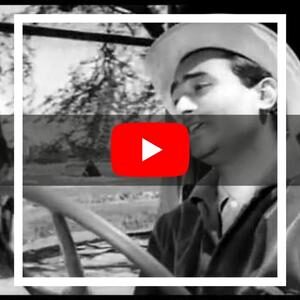 Hum Hain Raahi Pyar Ke shows Madan starting his journey from Delhi, and the entire song is shot outdoors, with Dev Anand at times walking elegantly in rhythm with the music. The runaway haughty Raksha is being “tamed” by Madan. While she walks on the hot road, he is comfortable in his truck, teasing her with “Kali ke roop me Chali ho dhoop mein”. The couple is attracted to each other and sings the famous duet “Aankhon Mein kya Jee, Rupahla Baadal”. Raksha forces Madan to sleep in the bathroom while she is snug in the bed giving rise to the lovely teasing duet “Aaja Panchhi akela hai”.
Hum Hain Raahi Pyar Ke shows Madan starting his journey from Delhi, and the entire song is shot outdoors, with Dev Anand at times walking elegantly in rhythm with the music. The runaway haughty Raksha is being “tamed” by Madan. While she walks on the hot road, he is comfortable in his truck, teasing her with “Kali ke roop me Chali ho dhoop mein”. The couple is attracted to each other and sings the famous duet “Aankhon Mein kya Jee, Rupahla Baadal”. Raksha forces Madan to sleep in the bathroom while she is snug in the bed giving rise to the lovely teasing duet “Aaja Panchhi akela hai”.
Raksha’s former groom, who is connected to the crime world, goes to the club where his dancer girlfriend sings the song “Kya ho Phir jab din Rangeela ho”. This song picturization is particularly interesting because it establishes Goldie’s fondness for long fluid tracking shots, which would come up again and again in later movies like Teesri Manzil, Guide, Tere Mere Sapne, etc. The climax of the film is unique in that the “fight scene” is happening simultaneously with the vamp Neeta (Shashikala) singing “See le Zubaan”, which highlights what would happen if the secrets would tumble out. Climatic song and the climactic fight scene go hand in hand here.
Nau Do Gyarah enhanced Vijay Anand’s reputation. Most of his 1960s output as a director was for elder brother Dev Anand’s Navketan Production house. His next film was the Kala Bazaar (1960), about the black marketing of cinema tickets. Dev Anand again showed that he wasn’t uncomfortable playing characters with dark shades. Raghu black markets cinema tickets, knowing fully well that his family and his girlfriend won’t approve of it. Kala Bazaar was probably the only movie where the three brothers acted together, though not in the same frame – only Chetan and Dev shared scenes while Vijay Anand’s character Nand somewhat faded away.
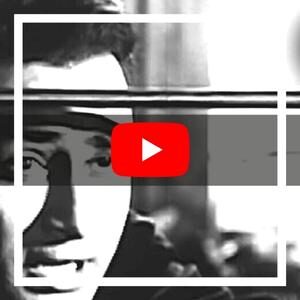 The songs were all brilliantly crafted, and perhaps one of the finest train songs ever is “Apni to har aah ek toofan hai” wherein Dev Anand is supposedly praying to the “ooparwala” – God – while actually, he is trying to attract the attention of Alka (Waheeda Rehman), the woman sleeping in the berth above his. Khoya Khoya chand was another breezy song about a man who has discovered love and is literally running loose – pun intended – across the hills on a moonlit night. The long-drawn court scenes perhaps took the punch out of the climax, yet the film was an overwhelming success.
The songs were all brilliantly crafted, and perhaps one of the finest train songs ever is “Apni to har aah ek toofan hai” wherein Dev Anand is supposedly praying to the “ooparwala” – God – while actually, he is trying to attract the attention of Alka (Waheeda Rehman), the woman sleeping in the berth above his. Khoya Khoya chand was another breezy song about a man who has discovered love and is literally running loose – pun intended – across the hills on a moonlit night. The long-drawn court scenes perhaps took the punch out of the climax, yet the film was an overwhelming success.
The golden streak continued with one of the finest romantic comedies of Hindi cinema, “Tere Ghar Ke Saamne” (1963). The children of two hostile men fall in love. Instead of a Shakespearean tragedy, it becomes a full-fledged comedy. The warring fathers antagonize each other, while the architect hero uses the same design for both men’s new bungalows. S.D.Burman – Dev Anand combo seemed to be in full flight with one beauty after tumbling out while Vijay Anand showed his increasing prowess at song picturizations. The first song is the superb teasing “Dil ka bhanwar karey pukaar” shot “inside” Qutub Minar in Delhi. Much later, it emerged that it was a clever mix of interior shots and carefully designed sets in Mumbai studios.
Goldie makes an uncredited appearance in the second interlude of the song. The romance was never this frothy, and with Dev Anand pursuing an effervescent Nutan onscreen, away from her serious onscreen persona, the stage was set for some brilliant comedy and songs. Another solo “Tu Kahaan ye bata” had Dev Anand strolling through the cold streets of “Shimla” searching for his love. When the heroine realizes that her lover is the son of her father’s sworn enemy, she walks away in a huff to which he sings, “Sun le tu dil ki sada”. While this romantic version has the hero pleading with the heroine to return to him, the second version also has the hero pleading to the warring fathers to make up with each other – in the film’s climax. It was evident by the end of the film that Vijay Anand didn’t use the song just as a stop-gap but mostly to tell and forward the story. “Sun le tu dil ki sada” shows both the romantic version and the climactic song where the son asks both fathers to be friends.
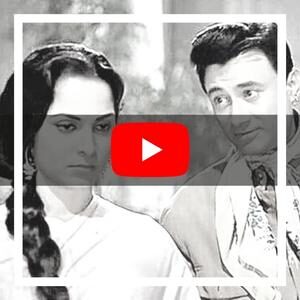 With the magnum opus of Navketan’s first color production Guide (1965), 31-year-old Vijay Anand had truly established his formidable talent in the annals of Hindi cinema. From the title scene with “Wahaan Kaun hai tera” to the final “Megha Megh de Chhaya de”, every song tells a story and is simply brilliant. To deal with Guide in these pages is simply impossible as it would require probably an entire book or issue dedicated to it. The dancer heroine Rosie (Waheeda Rehman) is set free, and her heart soars when she sings “Aaj phir jeene ki tamanna hai”. When Rosie runs away from home, Raju (Dev Anand), the guide, promises her that he won’t let her go with “Tere mere sapne ab ek rang hain”.
With the magnum opus of Navketan’s first color production Guide (1965), 31-year-old Vijay Anand had truly established his formidable talent in the annals of Hindi cinema. From the title scene with “Wahaan Kaun hai tera” to the final “Megha Megh de Chhaya de”, every song tells a story and is simply brilliant. To deal with Guide in these pages is simply impossible as it would require probably an entire book or issue dedicated to it. The dancer heroine Rosie (Waheeda Rehman) is set free, and her heart soars when she sings “Aaj phir jeene ki tamanna hai”. When Rosie runs away from home, Raju (Dev Anand), the guide, promises her that he won’t let her go with “Tere mere sapne ab ek rang hain”.
Rosie soon starts getting stage shows. “Piya tose naina lage re”, and its four stanzas show her increasing fame across India and increasing popularity. “Gaata rahey mera dil” shows that the duo is utterly besotted with each other. Once ennui sets in, Raju gets drunk and sings, “Din dhal Jaaye haye raat na jaaye” and reminisces about good times. Before being arrested for forgery, he watches Rosie sing “Mosey chhal kiye jaaye”.
Every song falls into place perfectly. Some surveys still show Guide as one of the top 10 films of Hindi cinema, thanks to its eternal music. It is said that S.D.Burman told Dev Anand, the producer, and actor, that he would give a music score that would make Dev Anand proud. It has proved to be the case here, and combined with excellent picturizations that forward the story; Guide is a classic by every definition.
Teesri Manzil (1966)
“Teesri Manzil” was one of those films that followed the old Hollywood rule of “an unhappy production leads to a happy movie”. At first, Dev Anand was supposed to be the hero. He had some differences with producer Nasir Hussein due to which Shammi Kapoor took over as the hero. Shammi’s wife, Geeta Bali, passed away during the making of the film, and Nasir Hussein kept the sets as they were till Shammi was ready to resume. Shammi wanted Shankar Jaikishan as music director, but Hussein stuck with R.D. All these resulted in one of the finest musical crime thrillers in the annals of Hindi cinema. Each song in the film has the typical Goldie trademark – long takes fluid camera movements that take you right into the middle of the dance.
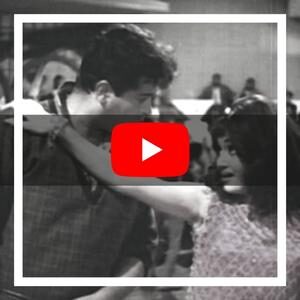 The first song, “O Haseena zulfonwali jaanejahan”, is an excellent example of superb picturization, and it also tells a story wherein the vengeful heroine is being fooled by the hero Rocky. But in the grand finale, when she supposedly agrees, Rocky sings the beautiful “Tumne Mujhe Dekha”. He describes in exquisite detail how she has changed his life. He assumes her tears as tears of joy while we know what has happened. The other three duets, “Aaja aaja Main Hoon”, “O mere sona re”, and the hugely underrated “Main inpe marta hoon”, are full of zest, as is the solo “Deewana mujhsa nahin”. Though the screenplay was by Nasir Hussein, Goldie also became an editor with this film. He showed total control in every aspect of filmmaking with this classic musical thriller.
The first song, “O Haseena zulfonwali jaanejahan”, is an excellent example of superb picturization, and it also tells a story wherein the vengeful heroine is being fooled by the hero Rocky. But in the grand finale, when she supposedly agrees, Rocky sings the beautiful “Tumne Mujhe Dekha”. He describes in exquisite detail how she has changed his life. He assumes her tears as tears of joy while we know what has happened. The other three duets, “Aaja aaja Main Hoon”, “O mere sona re”, and the hugely underrated “Main inpe marta hoon”, are full of zest, as is the solo “Deewana mujhsa nahin”. Though the screenplay was by Nasir Hussein, Goldie also became an editor with this film. He showed total control in every aspect of filmmaking with this classic musical thriller.
Jewel Thief (1967)
Jewel Thief is undoubtedly the most nuanced crime thriller ever to hit Hindi Cinema. The plot is almost like “Operation Mincemeat” from World War 2. The British floated a fake dead body to neutral Spain with fake military plans to fool the Germans into thinking that the invasion was as per the plans in the “dead body” of “Major Martin”. Here “Major Martin” becomes “Amar”, the “Jewel Thief” of the title who is fooling the Police and the world in general. While all the songs from the first “Ye dil na hota bechara’ to the teasing “Aasman ke neechey” are picturized well, it is the climactic “Hothon pe aisi baat” that belongs in the annals of great songs telling a story.
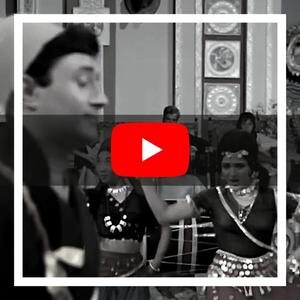 The great robbery is about to take place, and Shalu is telling that again and again in different ways to the audience – in the scene and to us – that something terrible is about to happen. Again, Goldie shows his tendency for long fluid takes. Lata sings both stanzas of 40 seconds duration, and it is one long take of the same duration. The camera moves with the heroine Vyjanthimala, and it takes us right into the middle of the onscreen action. These long takes add to the overall feeling of dread in the climactic song as the audience knows that the brainwashed Vinay is walking into a police trap, and Shalu is trying to warn him through the music – an excellent example of a song telling and forwarding the story.
The great robbery is about to take place, and Shalu is telling that again and again in different ways to the audience – in the scene and to us – that something terrible is about to happen. Again, Goldie shows his tendency for long fluid takes. Lata sings both stanzas of 40 seconds duration, and it is one long take of the same duration. The camera moves with the heroine Vyjanthimala, and it takes us right into the middle of the onscreen action. These long takes add to the overall feeling of dread in the climactic song as the audience knows that the brainwashed Vinay is walking into a police trap, and Shalu is trying to warn him through the music – an excellent example of a song telling and forwarding the story.
Kahin Aur Chal (1968)
“Kahin Aur Chal” was released and withdrawn within a day, as the producer wanted to show a loss for tax purposes. Except for some lovely songs and the plot details on Wikipedia, nothing survives. We do not know how the songs were picturized.
Johnny Mera Naam (1970)
“Johnny Mera Naam” was a fairly standard story of two long-lost brothers on the opposite sides of the law-and-order divide working against each other. Distributor turned producer Gulshan Rai struck gold with this film, and so did Dev Anand, acquiring a new generation of fans with his super-fast dialogue delivery and onscreen “singing”. Two songs stand out in the overall list. The first is a truly unique song in that it was a striptease, set to a slow tempo. With “Husn ke laakhon rang”, Padma Khanna set a new standard as the “dancer-vamp”. It is really a wonder that the song sequence was not banned or the film given an A Certificate. The next song that stands out is the teaser “Pal bhar ke liye koi humey pyar kar le” wherein Johnny teases an exasperated Rekha from room to room. She is busy closing doors and windows, but he always finds another one through which to sneak into the house, an excellent example of both the lyrics and the scene matching perfectly. (Of course, she lets him in the room finally).
Tere Mere Sapne (1971)
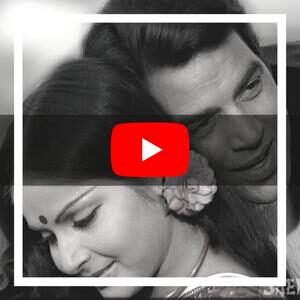 “Tere Mere Sapne” was written and directed by Goldie and told an unusual story of a doctor Anand (Dev Anand), who wants to leave the city and practice in rural areas. Nisha, the woman he marries, starts seeing the difference slowly when he ditches the rural area and becomes a sought-after city doctor. Fellow doctor Jagannath (Vijay Anand) is both friend and conscience to Anand. A beautiful song sequence is a mellow duet about a couple expecting their first child and the promises of a future wherein they dream of their childhood coming back with the repeated line “Thoda humara thoda tumhara aayega phirse bachpan humara”. The song “Jeevan ki bagiya mehkegi” https://youtu.be/breh1GMtmpI is tuned in S.D.Burman’s typical staccato phrasing style and minimalist instrumentation lead to the overall mellow feeling.
“Tere Mere Sapne” was written and directed by Goldie and told an unusual story of a doctor Anand (Dev Anand), who wants to leave the city and practice in rural areas. Nisha, the woman he marries, starts seeing the difference slowly when he ditches the rural area and becomes a sought-after city doctor. Fellow doctor Jagannath (Vijay Anand) is both friend and conscience to Anand. A beautiful song sequence is a mellow duet about a couple expecting their first child and the promises of a future wherein they dream of their childhood coming back with the repeated line “Thoda humara thoda tumhara aayega phirse bachpan humara”. The song “Jeevan ki bagiya mehkegi” https://youtu.be/breh1GMtmpI is tuned in S.D.Burman’s typical staccato phrasing style and minimalist instrumentation lead to the overall mellow feeling.
Blackmail (1973)
“Blackmail” remains a delicate story of a suspicious husband casting aspersions on his wife’s fidelity though he has declared initially that she is there in his every breath with the supremely romantic “Pal pal dil ke paas”. It’s a rare song wherein the heroine’s sing is mentioned, but “Asha O Asha” is about the heroine Asha’s dilemma torn as she is between her husband and her former friend cum current blackmailer.
Chhupa Rustom (1973) was a shallow remake of the Alistair Maclean-based thriller Fear is the Key. By this time, Goldie had also gone into the spirituality of Bhagwan Rajneesh and was taking time away from the industry to discover himself. He also wanted to act more and direct less, as seen by a slew of films that didn’t do well.
Bullet (1976) was Navketan’s Silver Jubilee Production, but the indifferent story and songs really didn’t add any luster to both Goldie’s or Dev Anand’s career. The film did have its moments in that the climactic scene, though copy-pasted from CID’s (1956) final scene, was still tense.
Ram Balram (1981) had a convoluted and tortured production history and yet was declared a hit. The film really didn’t have anything significant to show, and most if not all the songs were picturized indifferently, as compared to the earlier output in the 1950s and 1960s. Rajput (1982) was a multi-starrer that at times seemed convoluted yet was a box office success due to the presence of three big stars. Main Tere Liye (1988) was a vehicle to kickstart Dev Anand’s son Suneil Anand’s career, but the film sank without a trace.
There is always a “best period” for every artist. In Goldie’s case, it was his excellent work for Navketan in the 1950s and 1960s. Goldie will be forever associated with an all-time classic Guide. Though the 1970s weren’t kind to him as an actor, his sheer control of the medium is perhaps best summed by the song “Deewana mujhsa nahin is ambar ke neeche, aage hai qaatil mera aur main peechhe peechhe”.
A “Deewana” of the craft of film making.


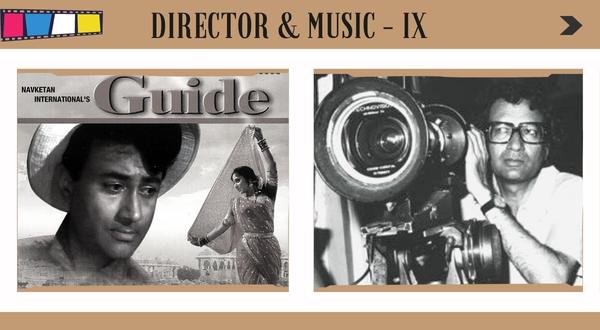
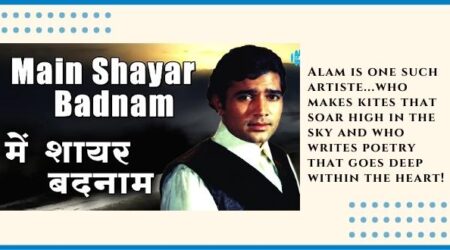
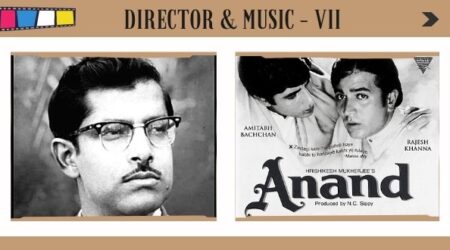
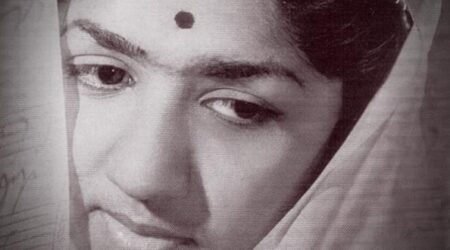
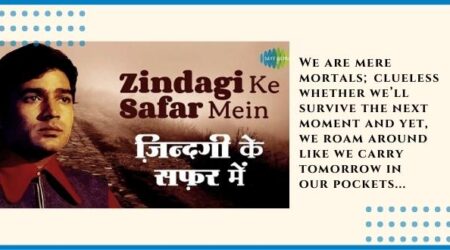
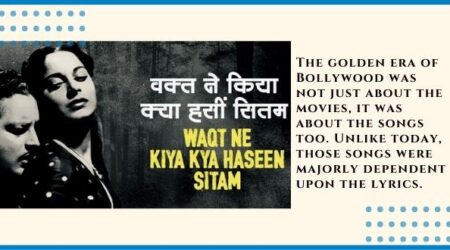
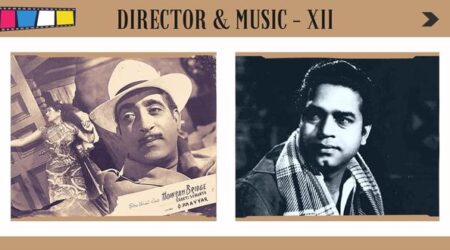
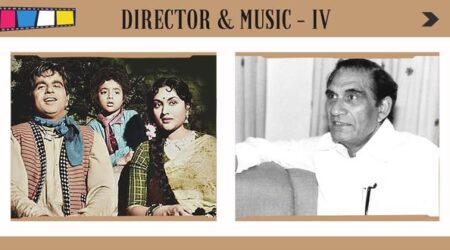
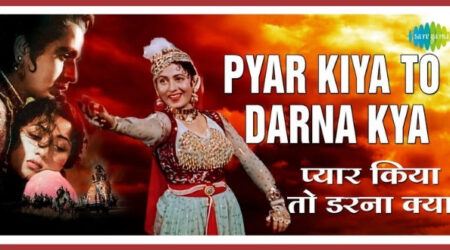
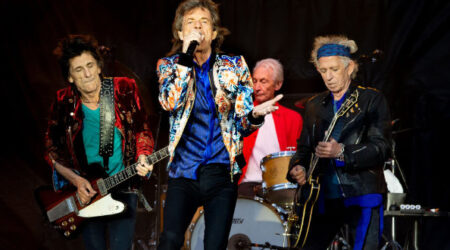
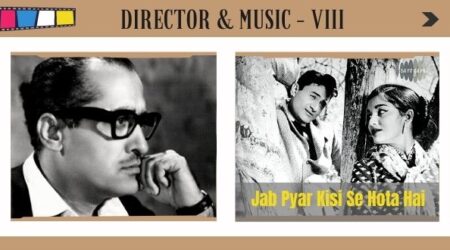

Comments (3)
Brilliant
Very well researched and well written too. thank you for sharing this treasure trove.
you will like to read my book, the only biography on the life of legend Vijay Anand , title ” Goldie The Man and his movies . its available on amazon